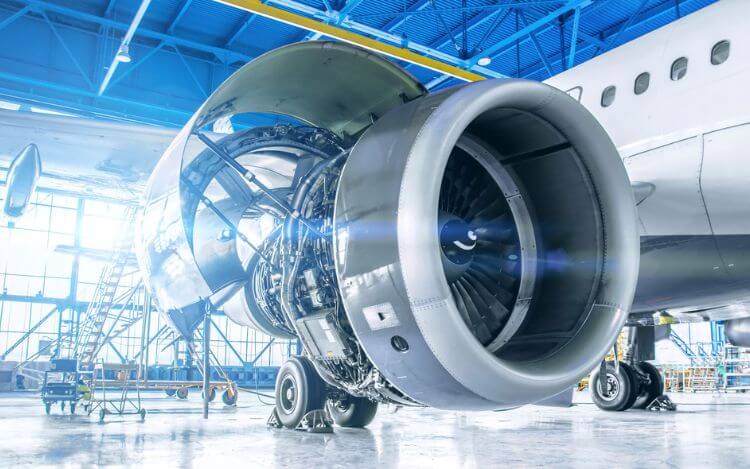
3 Common Gland Standards for the Aerospace Industry
Posted by CDI Products on Dec 14, 2022
From hydraulic systems to braking and landing gear systems, O-ring seals are in many aerospace applications and must compensate for extreme environmental conditions, such as high and low pressure or significant temperature changes. They must also adhere to engineering and design standards as well as industry regulations.
O-ring seals sit in a groove (gland) between two surfaces that are then mated together to create a tight seal, blocking the flow of liquids or gases through the gland’s internal passage.
When designing a gland, the key is to allow for proper and complete compression between the groove and the surface mating to it. Compression set failure – when an elastomeric material doesn’t return to its original size – is common with both static and dynamic seals.
Static Seals
Static sealing refers to two mating parts that don’t move relative to each other. These seals are categorized as follows:
- Axial seals: Used in face or flange-type applications, where the pressure is on the top and bottom of the cross section.
- Radial seals: The squeeze is between the inner and outer surfaces of the O-ring as found in most bore, piston, cap, and plug-style applications.
- Boss seals: The AS568-901 through -932 O-Ring sizes are intended to be used for sealing straight thread tube fittings in a boss. Boss Seals are designed to be installed for port dimensions per AS5202 and J1926 and fitting ends per AS4395. The standards for each of these boss rings utilize the same O-Ring size, but the J1926 is the newer design, and it has not yet been fully accepted by industry or by the military even though there is a military standard for it.
- Dovetail seals: It is often necessary to provide some mechanical means of restraining an O-Ring in a face seal groove during the assembly and maintenance of
equipment. An undercut or dovetail groove has been proven beneficial
in many applications to keep the O-Ring in place. This is an expensive groove to machine and should only be used when absolutely necessary.
Dynamic Seals
Dynamic sealing refers to applications where there’s relative movement between the gland and the O-ring, as in a piston or rod seal. Dynamic seals are identified by their three types of motion:
- Reciprocal motion: Back-and-forth motion between the sealing surfaces.
- Rotary motion: Circular motion between the sealing surfaces.
- Oscillatory motion: When a shaft rotates back and forth in a circular arc.
- Helical motion: The motion generated when one component of the velocity is constant in amplitude and direction, which is straight-line motion, while the other component is constant in speed but changes in direction evenly (circulation motion).
Designing the Appropriate Gland for Your Application
It’s important to consider a few key underlying conditions that cause a higher-than-expected compression set. These include extremely high temperatures (leads to hardening and resiliency loss), excessive squeeze (e.g., over-tightening), insufficient squeeze (e.g. too loose) and material that’s not compatible with the fluids.
Other factors to consider include:
- Stretch: When the inside diameter of an O-ring is stretched, its cross section is reduced. For an O-ring to fit well, it must be stretched between 1% and 5%, with 2% being the sweet spot in most applications to ensure a tight fit in the groove.
- Friction: O-rings should be composed of compounds with maximum heat resistance and minimum friction-generating principles.
- Surface finish: Defined by its characteristics of lay, surface roughness, and waviness, the quality of finish directly affects the final sealing result and lifetime of the O-ring.
- System pressure: Most O-rings can operate at pressures up to 1,500 psi. At higher pressures, the elastomer material must have ample strength to withstand extruding into the clearance gap.
- Chemical compatibility: O-ring chemical compatibility is critical in the design and can vary for static and dynamic seals.
3 Seal Gland Standards You Should Know
SAE International (formerly named the Society of Automotive Engineers) provides standardized gland design criteria and dimensions for O-ring seals to help ensure safety and reliability in all aspects of aviation. These are three of the most used gland standards:
1. AS4716
AS4716 SAE Aerospace Standard (AS) provides standardized gland (groove) design criteria and dimensions for O-ring seal glands for static and dynamic applications and other seals.
The glands have been specifically designed for applications using AS568
size O-rings at pressures exceeding 1500 psi (103 MPa) utilizing one or
two anti-extrusion (backup) rings and applications at pressures below
1500 psi 103 MPa) without backup rings. The glands have been sized
to provide sufficient squeeze for effective sealing while at the same
time limiting squeeze to allow satisfactory operation in dynamic applications.
While this specification covers the basic design criteria and recommendations for use with standard-size O-rings, these glands may also be suitable for use with other elastomeric seals and elastomeric and mechanically energized plastic (non-elastomer) based seals.
NOTE: For static external applications, i.e., where the application is overboard and sealing to atmosphere, the glands should be per AS5857.
2. AS5857
AS5857 SAE Aerospace Standard (AS) provides standardized gland (groove) design criteria and dimensions for elastomeric seal glands for static applications. The glands have been specifically designed for applications using SAE AS568 size O-rings at pressures exceeding 1500 psi (103 MPa) utilizing one or two anti-extrusion (backup) rings and applications at pressures under 1500 psi (103 MPa) without backup rings.
The glands have been sized to provide increased squeeze as compared to AS4716 for more effective sealing at low temperatures and low seal swell conditions. These glands are not recommended for dynamic use. Primary usage is for static external sealing. The rod dimensions are the same as AS4716. The cylinder bore dimensions are the same as AS4716 except for sizes -001 thru -011 and -104 thru -113.
3. AS6235
The AS6235 is an SAE aerospace standard for face seal gland designs. Specifically designed for internal and external pressure applications for aerospace hydraulic and pneumatic applications, AS6235 uses the same dash size range as AS4716 and AS5857 where applicable.
There are several other standards detailing hardware requirements such as the AS4832. This standard used mainly in large diameter landing gear applications
offers gland details for a 0.364 inch (9.246 mm) cross-section gland
(nominal 3/8 inch) with proposed gland lengths for compression-type seals with two backup rings over a range of 7 to 21 inches (178 to 533 mm) in diameter.
There are also standards (AS4052 and AS4088) for the installation of scrapers (also known as wiper seals) used in aircraft landing gear shock absorbers for contaminant exclusion.
If you have questions or want to learn more, our experts can advise which O-ring and gland design is best for your needs.
Topic: aerospace, dynamic seals, o-ring, static seals
